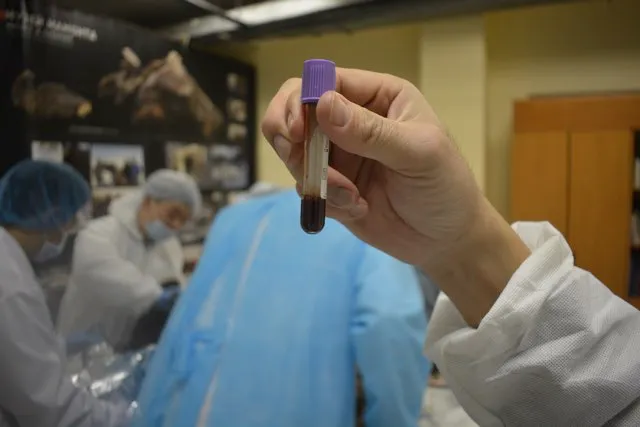Russian scientists are ready to clone an extinct species of horse, using the remains of a foal that has been buried 30m-deep in the Siberian permafrost for 42,000 years.
The foal, which dates back to the Pleistocene epoch and is thought to belong to the Lenskaya horse species, was discovered last year by locals in the Verkhoyansk region.
The tiny foal was taken to the Mammoth Museum in Yakutsk, Russia, to be researched. According to the director of the museum, Semyon Grigoriev, the museum has the biggest collection of ice age animals in the world, including a mammoth, an elk and a wolf, but this newly discovered foal is the best preserved of them all.
Read more:
“Usually remains – even if preserved with soft tissue – are not complete, or the body itself is deformed and [there is] numerous damages on the body,” said Grigoriev. “The foal is completely preserved, even with hair.”
Hair is extremely unusual in fossilised animals, as it tends to fall away during the preservation process. But the foal was in such good condition due to its icy tomb that the scientists established that it had a dark-coloured mane and tail, and a paler body.
After carrying out an autopsy, the scientists found that the internal organs, including the digestive system, were also in excellent condition. They were even able to extract liquid blood from the foal. This is particularly unusual, as blood tends to coagulate or even turn into powder when an animal is preserved in permafrost.

“This is only the second case in palaeontology where scientists [have] recorded liquid blood,” said Grigoriev. In 2013, his team at the Mammoth Museum unearthed half an adult female mammoth carcass that also had liquid blood. Yet this foal pre-dates the mammoth by around 10,000 years, so it is the oldest sample of liquid blood ever found.
The autopsy revealed that the foal was less than two weeks old when it died, probably after becoming trapped in mud. Its gastrointestinal tract was clogged with dirt, which it swallowed during its final moments.
By working with researchers at South Korea’s Sooam Biotech Research Foundation, which hit headlines a few years ago for its work in cloning pet dogs, the scientists are hoping to extract sufficient intact cells to clone the foal.
Despite the blood being well-preserved, it is not useful for cloning purposes as red blood cells do not contain DNA, and the DNA in white blood cells degrades quickly and is hard to extract. Therefore, according to Grigoriev, they are looking to the muscle tissue and internal organs in order to obtain sufficient genetic material.
Permafrost, which is mostly located in the Arctic and Antarctic regions, is rock or soil that remains at 0°C or colder for at least two consecutive years. As the Earth’s climate warms and the permafrost melts, ancient preserved animals are being revealed.
Follow Science Focus onTwitter,Facebook, Instagramand Flipboard
